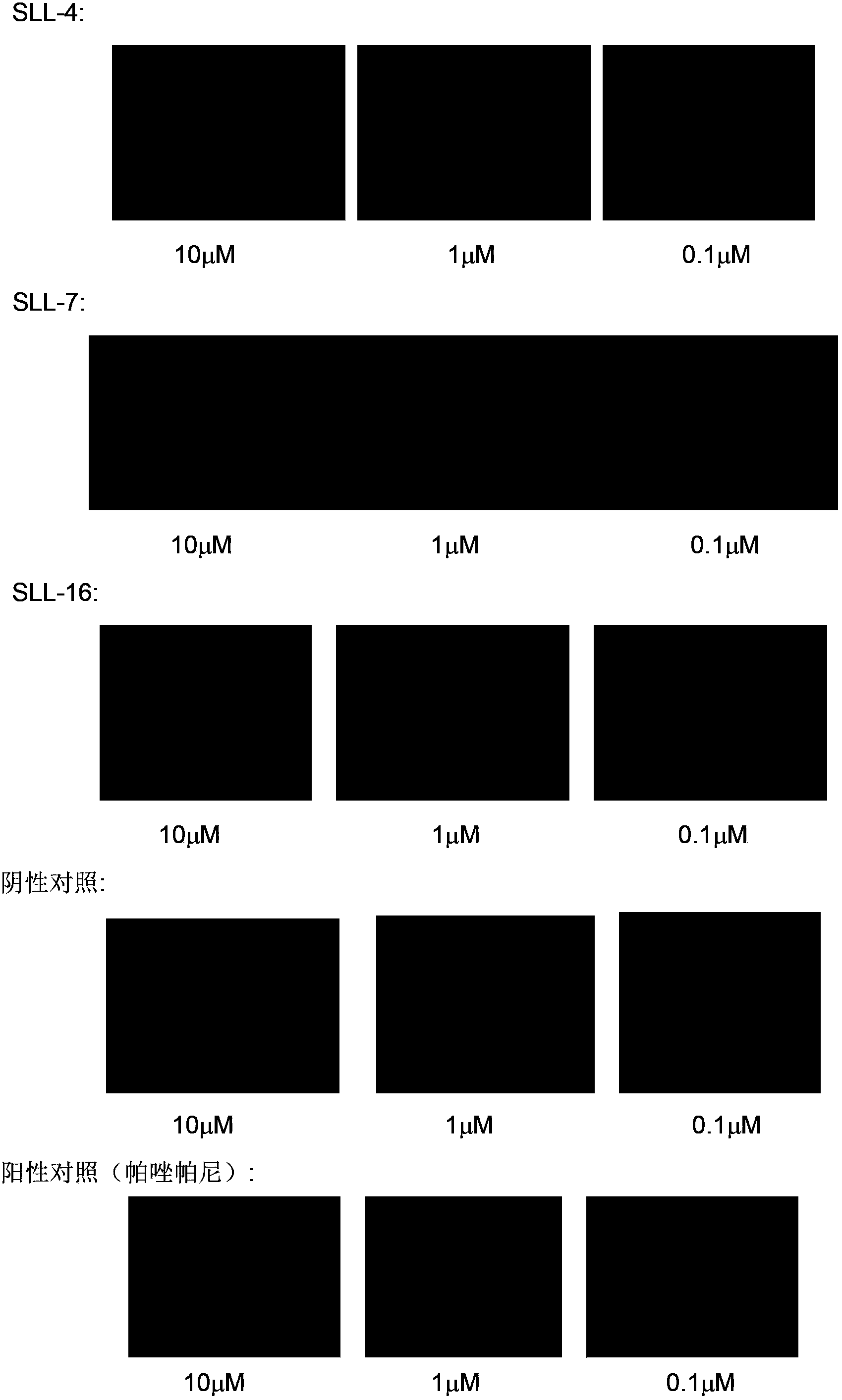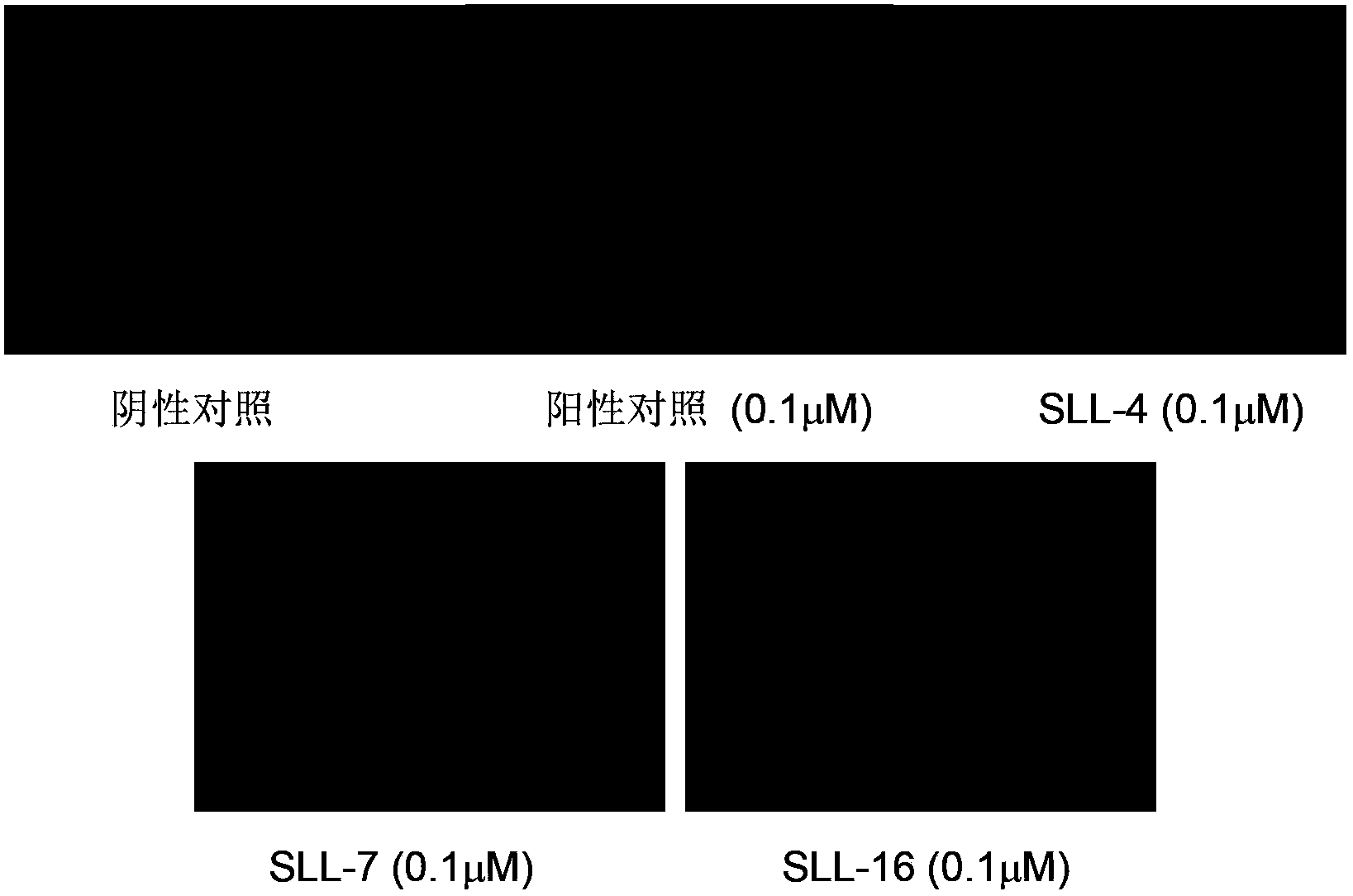Quinoxaline keto-amide compound, preparation method and application thereof
A kind of technology of quinoxalinone amide and compound, which is applied in the application field of preparing anti-tumor angiogenesis drugs, and can solve the problems such as reports that quinoxalinone amide derivatives are not found.
- Summary
- Abstract
- Description
- Claims
- Application Information
AI Technical Summary
Problems solved by technology
Method used
Image
Examples
Embodiment 1
[0042] In vitro pharmacological activity screening of anti-angiogenesis (cell level), the specific principle and measurement procedure are as follows: Determination of the inhibitory effect of the target compound on the formation of new capillary lumen-like structures in human umbilical vein endothelial cells (HUVEC). Under the stimulation of vascular endothelial growth factor, umbilical vein endothelial cells will form capillary lumen-like structures in the gel system formed by artificial basement membrane glue. The cell body was originally pebble-like, but the cell body was elongated and accompanied by bud-like luminal structures protruding, making the cell body irregular. As a result, adjacent deformed cells are often connected with each other by tubular structures, and translucent vacuoles or fissures can often be seen along the longitudinal axis of the cell body or the outstretched tubular structures. The current research suggests that these changes of endothelial cells i...
Embodiment 2
[0045] Determination of the inhibitory effect (tissue level) of the target compound on the rat arterial ring microangiogenesis model in vitro. The principle is as follows: Rat arterial rings can generate new microvascular networks under the stimulation of artificial Matrigel. The newly formed microvessels communicate with the endothelial cell layer, and the endothelial cells formed on the inner surface of the vascular lumen are elongated and overlap each other to form Unicellular or multicellular bridges. By generating endothelial cell pathways, the extensive fibrin glue surface is remodeled and networks and microvessels are formed. Since the formation of this structure is the same as the process of blood vessel development, this model can screen and evaluate the comprehensive effects of different drugs on the angiogenesis ability of vascular endothelial cells.
[0046] One male rat was taken and died suddenly by dislocation of the neck. The aorta was dissected and cut into a...
Embodiment 3
[0047] Example 3: Compound cytotoxicity analysis (MTT method)
[0048] MTT method, also known as MTT colorimetric method, is a method for detecting cell survival and growth. The detection principle is: succinate dehydrogenase in the mitochondria of living cells can reduce exogenous MTT to water-insoluble blue-purple crystalline formazan and deposit in the cells, while dead cells have no such function. Dimethyl sulfoxide (DMSO) can dissolve formazan in cells, and its light absorption value is measured at a wavelength of 490nm with an enzyme-linked immunosorbent detector, which can indirectly reflect the number of living cells. Within a certain cell number range, the amount of MTT crystal formation is proportional to the cell number. In this experiment, four solid tumor adherent cell lines were selected for the cytotoxicity analysis of the test compounds, namely human cervical cancer cell HeLa, human ovarian cancer cell 3AO, human breast cancer cell MCF-7 and human prostate can...
PUM
 Login to View More
Login to View More Abstract
Description
Claims
Application Information
 Login to View More
Login to View More - R&D
- Intellectual Property
- Life Sciences
- Materials
- Tech Scout
- Unparalleled Data Quality
- Higher Quality Content
- 60% Fewer Hallucinations
Browse by: Latest US Patents, China's latest patents, Technical Efficacy Thesaurus, Application Domain, Technology Topic, Popular Technical Reports.
© 2025 PatSnap. All rights reserved.Legal|Privacy policy|Modern Slavery Act Transparency Statement|Sitemap|About US| Contact US: help@patsnap.com



